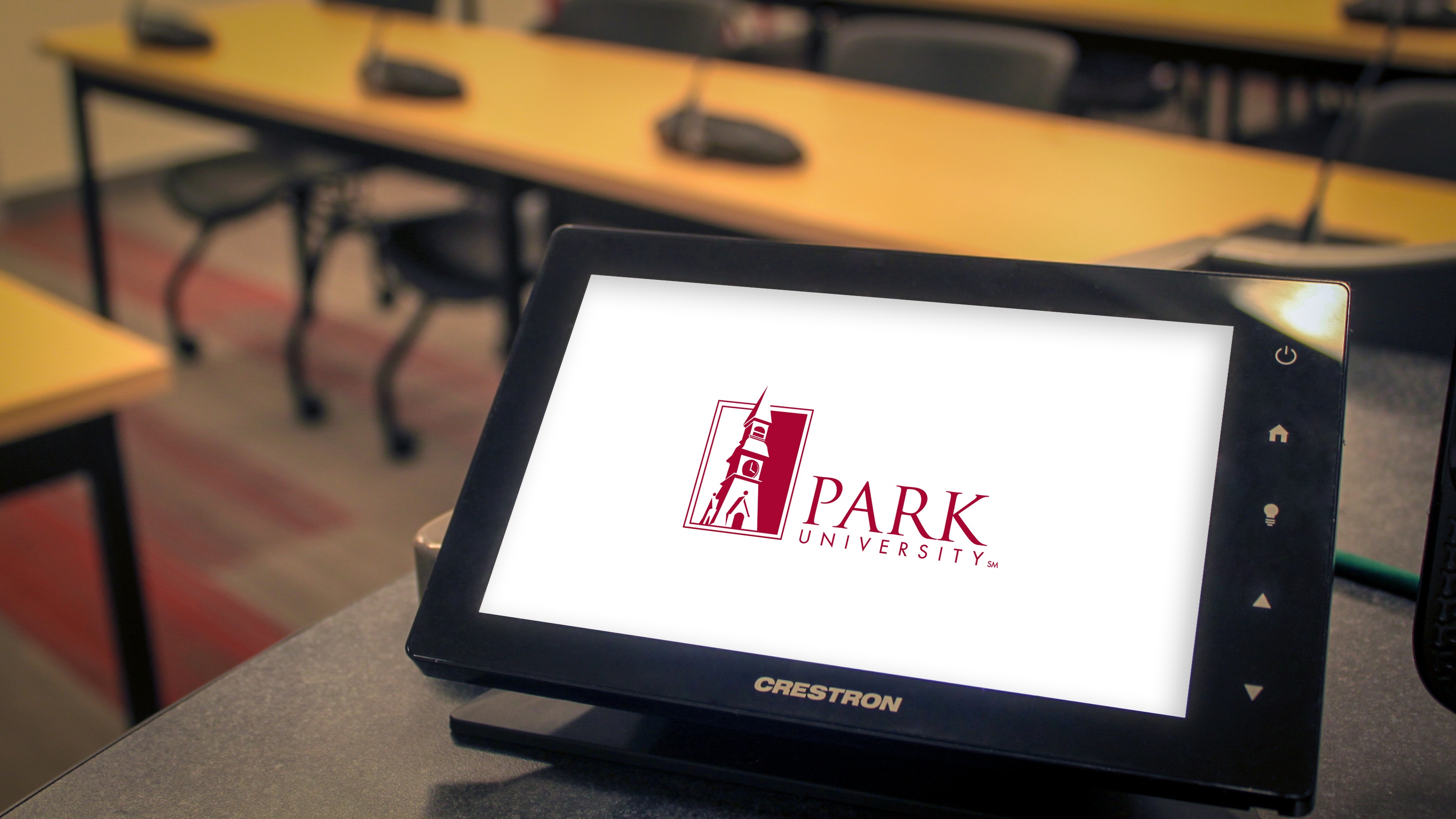ABOUT THE PROJECT
Park University, founded in 1875 and located in the city of Parkville, Missouri, has 42 campuses in 22 U.S. States, including four in the Kansas City area (downtown, Lenexa, Parkville, Independence) and a campus center in Austin, Texas. Most of the satellite campuses are on or near United States military bases and share quarters with other businesses and organizations.
Since the late 1960s, Park University has experienced growth primarily through the establishment of a Military Degree Completion Program and the Military Resident Center System. Park’s total annual enrollment of 17,000 has grown from its small base since 1996 when it first began offering online courses.
Years later, the challenge becomes, how do we migrate the face-to-face instruction and one-on-one communication experience to our online classes? How can we deliver an interactive environment where students can freely ask questions and professors can engage their classes in group discussions when they are in different locations.
Michael Graebner, Media Services Engineer at Park University, was tasked with identifying a solution to improve the performance of the online classrooms.
AVI Systems in Kansas City partnered with the university to meet the staff and students’ technological needs.
Have a pressing AV need? Contact us for a free assessment today.
.jpg?width=3259&name=park-u_edited(5).jpg) Our Solution
Our Solution
With over 40 campuses across the United States, the Pirate Patch distance learning program has a variety of instructors and professors teaching the courses in different types of classrooms with class sizes ranging anywhere from 2 to 25. Each of these factors has a significant effect on the performance of the systems providing content and connectivity from the “teaching” site to the “learning” site and vice versa.
Over the course of several weeks, AVI and Park University stakeholders met to discuss how the current online classes could be improved upon.
What were the shortcomings and how could they be addressed? Representatives from the faculty, student body, university technology support staff and executive level leaders were interviewed for feedback.
Project Developer Scott Ford and Design Engineer Nate Nice met with this group of stakeholders to discuss the goals for the expansion of the Pirate Patch distance learning program and how the new technology would be rolled out to over 40 different sites. During this discovery process, AVI learned more about the dreams and expectations for the Pirate Patch program and was able to help Park University understand the financial commitment necessary to reach their goals.
AVI presented Park University with several budget options within an Executive Summary Report. This report included a functional summary along with operational requirements. At this time AVI also made a point to discuss how these systems would be supported.
The Park University team chose the most adaptable solution for the environments that they would reside in.
 Most “learning” classrooms are mobile and require the solution to be wireless and configurable. Students on this end are taught from a distance, however, they have access to the classroom where the lecture originates via a web-based portal that shares video of the professor and classmates on the other end.
Most “learning” classrooms are mobile and require the solution to be wireless and configurable. Students on this end are taught from a distance, however, they have access to the classroom where the lecture originates via a web-based portal that shares video of the professor and classmates on the other end.
Audio from both sides is brought together with BOSCH wireless discussion stations so that each site can pose questions and hear the responses. Each of these BOSCH units can be located and shared by up to three students.
The equipment included in the case that travels with each class includes the wireless base station, long-stem microphone, battery pack, charging station and wireless access point.
The “teaching” classrooms are more integrated into the room and require more sophisticated components and control. The instructor can select the camera view of either themselves (rear camera) or the students in the classroom (front camera) as well as the sources of content being taught with, including PC, laptop, ClickShare wireless presentation devices from Barco, and document cameras.
.jpg?width=3456&name=park-u_edited(2).jpg) This control is provided by a touch panel at the podium in the front of the room which handles source selection, camera control and volume in the room.
This control is provided by a touch panel at the podium in the front of the room which handles source selection, camera control and volume in the room.
Audio for the students in the classroom is brought to the learning site via the wireless BOSCH discussion units placed near the students in that classroom. Both sides of the distance learning classrooms have open mics to promote the interactive classroom environment.
Along with the new technology, Park University has enlisted the AVI Systems PRO Support team to provide on-call assistance from a Global PRO Support Specialist over the phone or AVI’s website.
Over two phases, Park University has rolled out their Pirate Patch distance learning technology to over 40 campuses in North America with enrollment at each location growing every semester. AVI Systems looks to continue the partnership with Park University.









